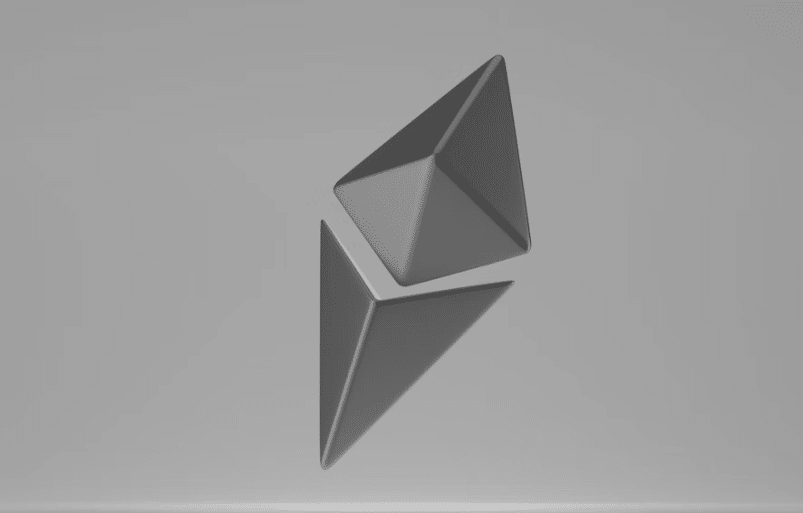Despite Ethereum’s position as the leading smart contract blockchain, it still suffers from scalability issues. This is a challenge for Ethereum as its network supports a growing ecosystem of decentralized applications (dApps) and decentralized finance (DeFi) protocols that require high throughput and low transaction fees to scale. To address Ethereum’s scaling issues, Layer 2 protocols have emerged. Optimism is one of the most popular ones.
In this guide, we’ll discuss what Optimism is, how it works, and its benefits and drawbacks.
What Is Optimism?
Optimism is a layer 2 solution for the Ethereum network that utilizes ‘optimistic rollups,’ a kind of rollup that ‘optimistically’ accepts all transactions in the rollup as valid.
This process saves time as individual transactions get submitted without proof of their validity. However, validators involved in the rollup have up to a week to question the whole rollup if they have any doubts.
Optimism rolls up multiple transactions into one transaction and settles them on another layer, but with the receipts being relayed back to the Ethereum blockchain. By bundling up transactions, Optimism offers users cheaper transactions and an improved user experience.
Optimism has since grown to become the second-largest Ethereum Layer 2 scaling solution after Arbitrum, with a total value locked of $772 million, according to data on DefiLlama. The Layer 2 solution is also supported by various DeFi platforms such as AAVE, Synthetic, and Uniswap.
How Does the Ethereum Layer-2 Optimism Work?
The Optimism Layer 2 solution addresses Ethereum’s scalability issue using optimistic rollup technology. These rollups bundle or consolidate several transactions into one on the Ethereum network, significantly reducing the gas fees required by sharing the cost between the users whose transactions are in the bundle.
Transactions on the Optimism scaling solution are assumed valid by default, mimicking the ‘innocent until proven guilty’ principle. Thus, transactions are processed much faster, improving the user experience.
Optimism has a security system in place for transactions deemed doubtful. This security mechanism provides a one-week window where validators can submit and run a fault proof. This means asset transfers from the Optimism network to the Ethereum blockchain may take up to seven days to complete.
Once a fault proof is submitted, the transaction in question will go through a verification process against the state on the Ethereum layer. If the fault proof is challenged successfully, it’s removed and reprocessed.
Optimism, designed as a scaling solution for Ethereum, borrows significantly from Ethereum’s architecture. Optimism utilizes the same virtual machine as the Ethereum network and charges gas fees similarly but at a lower rate. Additionally, users can send just about any ERC-20 asset between the two blockchains.
How to Use Optimism
For anyone who has used Ethereum before, using Optimism feels the same as using Ethereum.
To use Optimism, you must deposit either ETH or ERC-20 tokens to the Optimism token bridge. This way, you can process transactions on the Ethereum mainnet through Optimism. You can then change your tokens back to the Ethereum network when done.
You’ll need to use the Optimism Gateway to deposit your tokens. You can connect to the Optimism Gateway via a Web3 wallet, such as MetaMask or Trust Wallet. The transaction cost quoted will depend on the amount of tokens you want to transfer and deposits happen in minutes.
Optimism will also notify you that you won’t be able to withdraw the funds until after a week. This delay is part of Optimism’s security mechanism. However, once you have successfully deposited your funds on Optimism, you can use them on supported dApps like Uniswap and save on fees. To do this, ensure that your network is set to Optimism.
Benefits and Drawbacks of Optimism As an Ethereum Layer
Just like any technology, Optimism offers both benefits and drawbacks.
Pros
- Scalability: Optimism provides a solution to Ethereum’s scalability problem by using optimistic rollups. This involves moving the computational and status storage off-chain.
- Cheaper transactions: By bundling the transactions into one, Optimism significantly reduces the gas fees linked with Ethereum transactions while maintaining the trustless nature and security of the blockchain.
- Ethereum compatibility: Optimism borrows heavily from Ethereum’s architecture, which results in enhanced user experience.
Cons
- Slow transactions: Optimism has longer withdrawal times due to its security mechanism, which allows validators to raise any concerns they have if they doubt a transaction.
- Limited smart contract functionality: Users would still need to rely on Ethereum or other blockchain alternatives if their dApps heavily rely on smart contracts.
- Security risks: There are some potential security risks as Optimism relies on its fault-proof mechanism to validate transactions.
Final Words
Optimism offers several benefits for Ethereum transactions, including seamless compatibility with the Ethereum main chain, improved scalability, and reduced fees. But just like with other technologies, Optimism has its drawbacks, including longer withdrawal wait times and limited smart contract capability.
As Ethereum’s adoption grows, it will be fascinating to witness how Optimism will evolve and transform to meet user needs.




